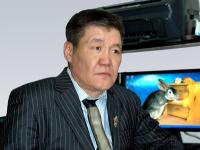Энэ 7 хоногт
World Bank issues analysis of 3 ger district areas
Low levels of infrastructure are characteristic of the ger areas.

Low levels of infrastructure are characteristic of the ger areas. Only the city centre ger benefits from 27% of paved roads, which is 7 to 9 times the amount of paved road in the mid-tier ger area (4%) and the fringe ger area (3%). The lack of roads – or excess of earth roads -- represents a major problem for ger residents as it increases the levels of dust and reduces traffic capability of vehicles and public transport - residents walk longer distances as buses cannot operate on the narrow earth roads. Furthermore, the absence of paved roads also means there are no drainage for waste and rain waters, and no street lights. This makes walking hazardous and also contributes to crime. Regarding the solid waste management, ger areas residents claim the public service to be the worst of all and describe it as unreliable, infrequent, and leading to waste stagnancy problems. According to the analysis, there is one vehicle a day in summer per 100 household, and even less in winter. Ger inhabitants’ waste quantity varies around 1kg in the summer and 0.3kg in the winter per household.
Heating in also a major problem in the ger district as it contributes to high levels of pollution and represents 40% of the total income of the poorest families. In the areas studied, ger have no proper heat insulation and lose 4-5 times more than national insulation standards and individual houses lose twice more. Pollution and heating expenditure could be reduced if heating efficiency were heightened. In that respect, problems of insulation and low performance heater, as well as the use of raw coal must be solved. Household stoves’ efficiency should be improved, the use of raw coal for heat-only boiler and individual stoves reduced, and cleaner fuels used.
Electricity seems to be a minor problem and most residents of the three areas in the study have electricity. They use an average of 100-110 kWh per day per household and electricity expenditure represents around 4 to 5% of their monthly income. The main problem faced by the residents is voltage drops due to capacity shortages in the current transformers and substations.
Concerning social services, these are restricted and limited. Schools lack the facilities to absorb an increasing number of students. There are only 2 secondary schools in the ger city centre, on 1 in the mid –tier ger and one in the fringe ger of the areas studied. Furthermore, little health care facilities in poorest areas and fringe ger areas are available. Mongolia has 23.4 hospitals per 100 thousand people (twice that of EU countries) towards which goes 2/3 of its state health budget. Only 5.5% percent goes to its Primary Health Care Facilities (PHC).
Most interesting is the survey of the residents’ opinion regarding the future development of their respective district. The survey showed that 63.2% of city centre ger inhabitants are mostly satisfied with their housing, which is 10% higher than then the number of inhabitants living in UB apartment areas. Mid-Tier Ger inhabitants are equally moderately and very satisfied with 46.7% and 46.8% respectively. Nevertheless, the study showed 50% of inhabitants living in the fringe ger area were very dissatisfied with their housing condition.
As such, the quasi majority of inhabitants – 48% -- in the ger centre area of Khoroo would be equally satisfied with either the development of a mix of apartments and semi detached houses or the improvement of the existing housing and supporting infrastructures. 33% wish to see the development of apartments or mix of apartments and detached houses in the whole of the Khoroo ger centre area. Generally, city centre ger and mid-tier ger residents are reluctant to see the construction of high rise-buildings in their area. 69.4%, 79.3% of city centre ger, mid-tier ger respectively prefer low rise apartments and around 30% are in favour of newly built detached houses. Meanwhile, 37.1% of fringe ger area inhabitants are in favour of high rise apartments and 47.4% in favour of newly built detached houses.
If infrastructures are to be improved, it would mean an increase in prices so companies do not operate at loss -- which is already the case for some – and the question is whether residents will be able to afford it. For example, the cost for installing booster pumps in an expected large scale of apartments development will be USUSD550 per household. Moreover, it will increase the water consumption from 5-10 litres a day to average 270 litres a day. This will worsen the financial situation o f USUG who is already operating at loss. In addition, pipes insulation against freeze will also be a challenge.
Altogether, the cost of water infrastructure in mid ger area per houses would be MNT6 to 16 millions. Roads improvement around the TV bus terminal in city centre ger would cost around USUSD136 thousand and the cost of their maintenance -- including street lights every 50m -- would be approximately USUSD1500 per km. In the mid-tier ger district, it would cost USUSD232 thousand to upgrade and extend the gully roads. Meanwhile, connecting ger residents to district heating would not be cost effective as heat load density for individual ger is 40-50 times lower.
As such, the cost of improving the ger areas’ infrastructure, social services, and living conditions are important and the Government is faced with the problem of making them cost effective while affordable to the residents. Mongolians who live in the ger areas have an average monthly income which varies from approximately USUSD160 to USUSD350. Therefore, their majority would not be able to afford any of the apartment buildings proposed by the Government, and low cost housing should further be examined as alternatives. Meanwhile a housing financing mechanism is needed.






